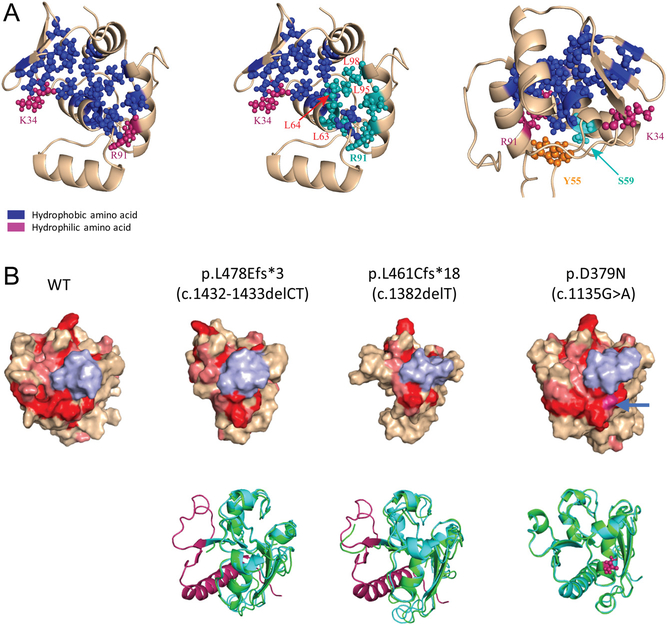Figure 7.
Structural impact of the germline mutations that affect the CTD only or the NTD only. (A) The germline mutations that impact the NTD only commonly affect the residues in or near the conserved hydrophobic groove of the NTD. Left: The conserved residues that form the hydrophobic groove in the NTD were highlighted in blue color; K34 and R91, two hydrophilic residues at the bilateral ends of the groove, were highlighted in dark red color. Middle: The residues L63, L64, L95, L98 and R91 (highlighted in light blue), which are affected by the germline mutations, are in or at one end of the hydrophobic groove. Right: The two residues that are affected by the germline mutations, S59 and Y55, are located proximal to or away from the hydrophobic groove, respectively. (B) Mutations that impact the CTD only disrupt a conserved ‘flat’ surface structure. Far left: The residues 350–531 in the CTD were modeled based on the yeast Cdc73 structure. Red and pink colors highlight identical and highly conserved residues between human and yeast CDC73, respectively. The region from 387–394 is colored in light blue to display the similar orientation of each model. Top 3 on the right: the surface view of the mutant structures as specified. The blue arrow shows the location of the residue D379; Bottom: Superimposition of the modeled mutant structure (light blue) over the WT structure (green), with the missing/affected structure in the mutants highlighted in magenta color.

